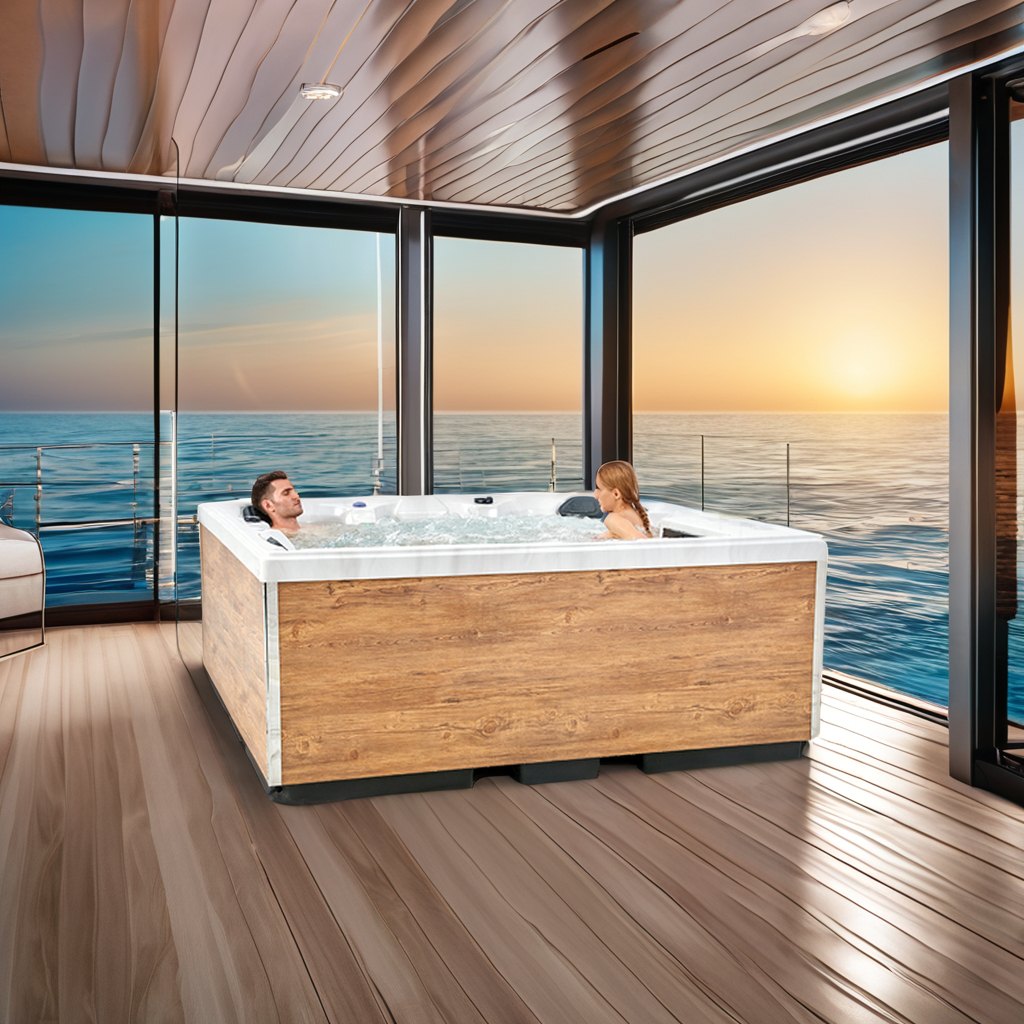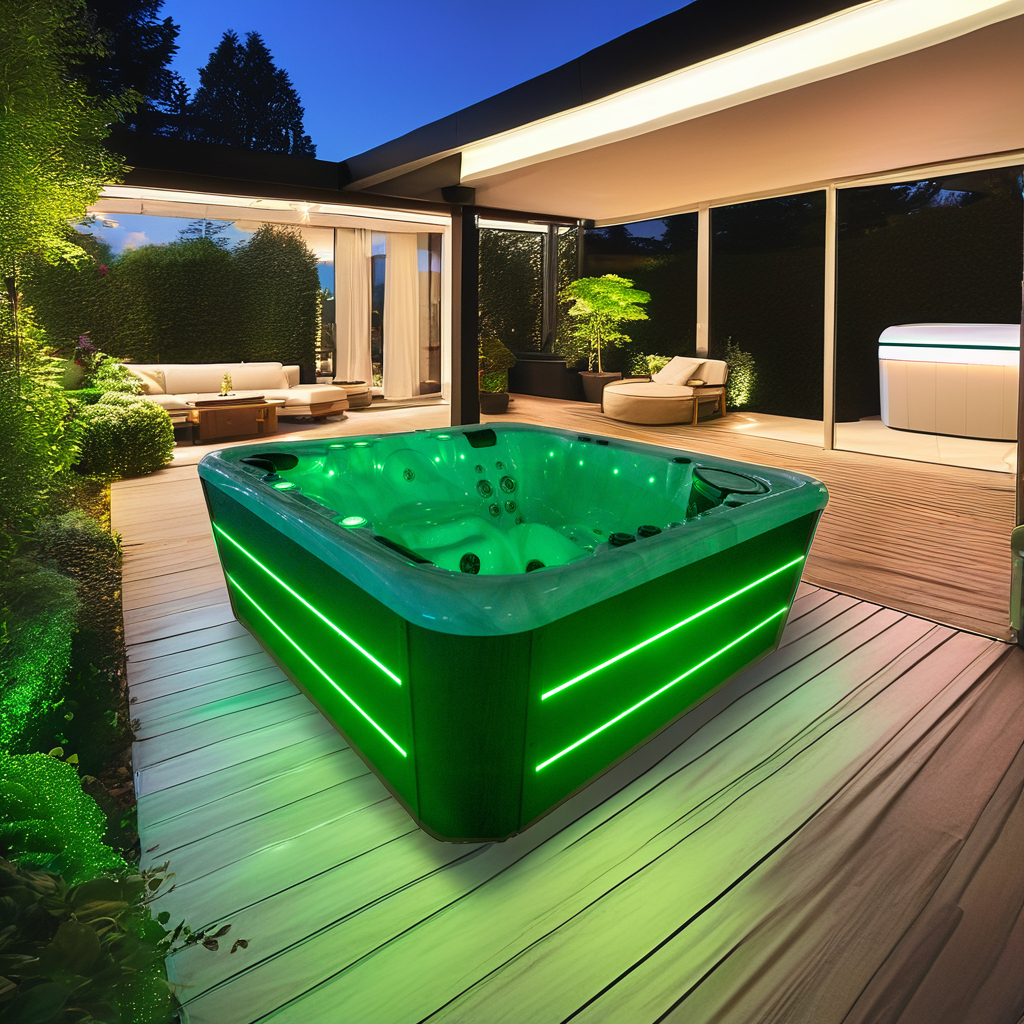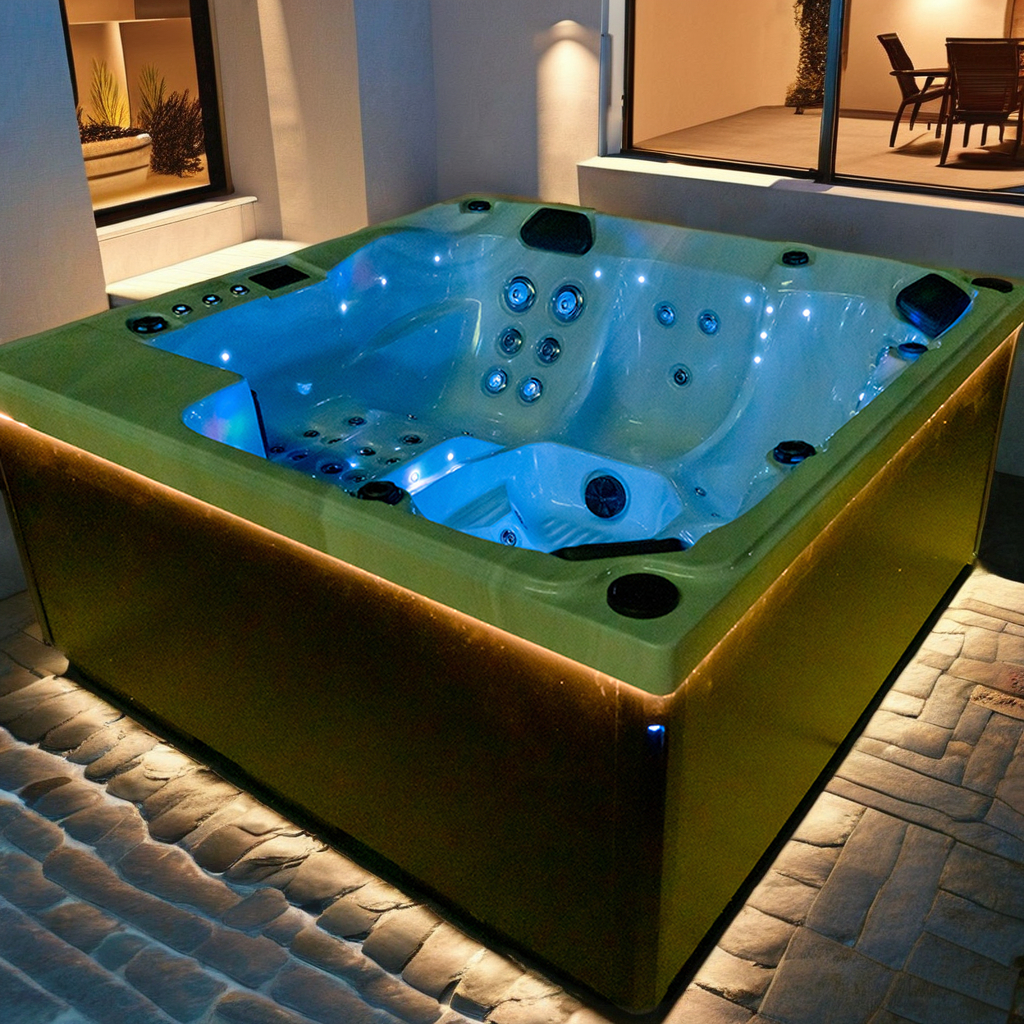
Should I place something underneath my spa massage bathtub?
2025-08-20 15:35When using and installing a spa massage bathtub, many people overlook a seemingly insignificant but crucial question: does the bathtub require some kind of material or structure to prevent it from shifting?
This article will provide an in-depth analysis of this issue, systematically discussing the risk of spa massage bathtub shifting, the necessity of preventing shifting, available material types, structural design principles, and precautions for professional installation.
This multi-dimensional analysis will help readers understand why preventing spa massage bathtub shifting is not just a minor issue, but a fundamental step in ensuring safety, longevity, and user experience.

Structural Characteristics and Operational Mechanisms of Spa Massage Bathtubs
To understand why spa massage bathtubs pose a risk of shifting, we first need to understand their basic structure and operational characteristics.
1. Weight and Dynamic Load of Spa Massage Bathtubs
A spa massage bathtub is typically made of acrylic, fiberglass, stainless steel, or a composite material. Empty, it can weigh tens to hundreds of kilograms. Once filled with water and the weight of the user, the total weight can easily exceed 500 kilograms. This data is particularly significant in multi-person bathtubs.
Additionally, spa massage bathtubs contain multiple pumps, air bubble systems, and jets, generating water impact forces during operation. While these forces are soothing for the user, they impose continuous dynamic loads on the device itself, causing subtle movement, especially on uneven surfaces or unstable supports.
2. Mechanical Vibration During Operation
The pump, motor, and air bubble system of a spa massage bathtub generate low-frequency vibrations during use. While manufacturers typically incorporate shock-absorbing components into their designs, this vibration can still pose a risk of displacement over the long term, especially if the installation foundation is unstable.
3. Internal Impact Caused by Water Fluctuations
When a user moves or adjusts their position in the bathtub, the water fluctuates. While this fluctuation does not carry large amounts of energy, frequent use and accumulated over time can cause the bathtub to slowly shift on the floor, especially if the bathtub base is not treated with anti-slip treatment.

What problems might spa massage bathtub displacement cause?
Why is spa massage bathtub displacement a concern? The impacts aren't limited to the inconvenience of moving the tub; they can also include the following:
1. Increased safety hazards
If a spa massage bathtub shifts, it could cause power cords, plumbing, or drainage systems to break due to stretching or bending. This can not only cause leaks but also create electrical shorts, posing a risk of electric shock or fire.
2. Impact on the proper functioning of the drainage system
A spa massage bathtub must remain level to ensure the drain can efficiently drain accumulated water. If the tub tilts due to displacement, drainage will be slow or blocked, and in severe cases, water may backflow.
3. Damage to the floor or mounting platform
If there's insufficient friction between the tub's base and the floor, frequent movement under the weight and impact of water can scratch tiles or flooring, and even damage the structural integrity of the mounting platform.
4. Shortened equipment lifespan
Continuous micro-movement puts strain on cables, connectors, and plumbing, increasing wear and tear and the chance of failure, ultimately shortening the overall lifespan of the spa massage bathtub.
The Necessity of Preventing Spa Massage Bathtub Movement
In summary, to ensure the stability of a spa massage bathtub during extended use, it's essential to place appropriate structures or materials on its base. This measure not only impacts user safety but also directly affects device performance and maintenance costs.
This issue is often overlooked, especially during home installations or unprofessional installations. Many users place the bathtub directly on tiled or wooden floors, ignoring the risk of movement caused by vibration, load, and water flow. This can lead to frequent and difficult-to-remediate problems later.

Available Materials and Structural Designs for Spa Massage Bathtub Bottom
Preventing movement can be categorized into three categories: anti-slip treatment, reinforced support, and shock-absorbing structures. Here are a few possible solutions:
1. Anti-slip Mats or Rubber Support Blocks
The most basic solution involves placing high-strength rubber anti-slip mats or support blocks at the four corners of the spa massage bathtub base. These materials have a high coefficient of friction and effectively prevent the bathtub from sliding on slippery surfaces.
· Advantages: Easy installation, low cost, and no damage to the existing floor.
· Disadvantages: Cannot completely suppress vibration; gaskets must be regularly inspected for displacement or deterioration.
2. Waterproof Wooden or Composite Base
A dedicated wooden base or PVC composite bracket beneath the spa massage bathtub provides height for drainage and allows for custom grooves to fit into the bathtub base, creating a physical stop.
· Advantages: Stable structure, convenient for concealing drainage lines, and easy maintenance.
· Disadvantages: Requires custom fabrication, resulting in relatively high costs.
3. Cement Mortar Base with Anti-Slip Coating
In professional installations, a prefabricated base is often constructed from cement mortar and coated with an epoxy anti-slip coating. This method, similar to a "semi-recessed" installation, allows the base of the spa massage bathtub to fit seamlessly into the platform, leaving virtually no room for movement.
· Advantages: Extremely stable, suitable for fixed spa massage bathtubs.
· Disadvantages: Immovable, difficult to install, and suitable for long-term installations.
4. Metal Frame Support System
Some high-end spa massage bathtubs come with a metal frame support base. This structure features adjustable feet and bottom retaining brackets to prevent the tub from moving over time.
· Advantages: Adjustable, stable, and easy to reposition.
· Disadvantages: High cost and higher floor load requirements.
Other Installation Measures
Base material alone is not enough to completely prevent movement. The following are some recommended installation measures:
1. Fixed Side Wall or Corner Recessed Installation
Installing a spa massage bathtub in a space bounded by two or three walls creates a natural "retaining structure" to prevent lateral movement. This is a common practice in many bathroom designs.
2. Vertical and Horizontal Leveling
During installation, use a level to accurately adjust the bathtub's level to ensure it does not tilt or slide due to gravity. Also, check that all four corners are flush with the floor and not hanging off.
3. Edge Sealing with Sealant or Adhesive
Using mildew-resistant sealant or structural adhesive to seal the joints between the tub's bottom edge and the floor enhances slip resistance and prevents moisture intrusion.

Movement Prevention Strategies for Different Usage Scenarios
Application scenarios | Recommended bottom protection methods | Is fixing recommended? |
| Home bathrooms | Non-slip mats + wooden support base | Optional |
| Outdoor terraces | Concrete platform + non-slip coating + metal retaining grooves | Recommended |
| Public fitness centers | Embedded concrete base + waterproof rubber strips + corner restraints | Required |
| Portable home bathtubs | High-friction rubber feet + adjustable feet | Not required |
| Medical or rehabilitation facilities | Metal frame + anti-vibration pads + platform positioning | Recommended |
Are your spas energy-efficient and environmentally friendly?
Yes, our spa systems are designed with energy efficiency and sustainability in mind. We use advanced insulation materials, energy-saving circulation pumps, and eco-friendly components to reduce power consumption. This helps end-users save on utility bills while minimizing their environmental impact.
As a responsible spa manufacturer and supplier, we also adhere to strict environmental policies in our factory operations. For distributors and developers focused on green building or sustainable wellness products, our energy-efficient spa solutions are the ideal low-cost, high-value option.
